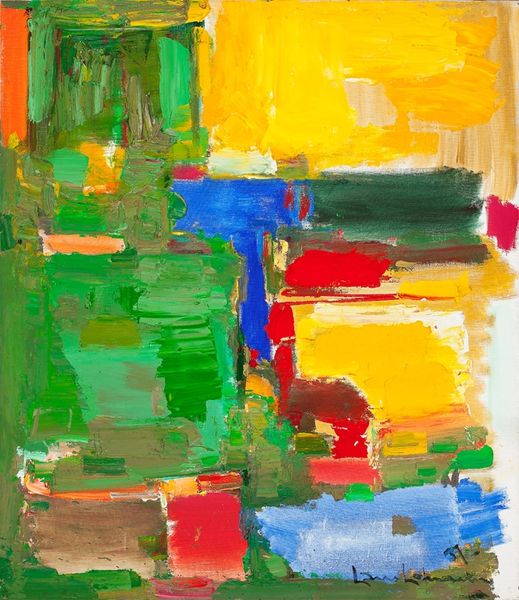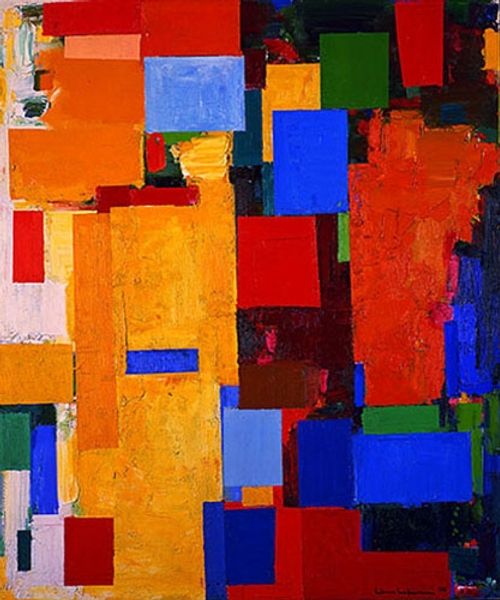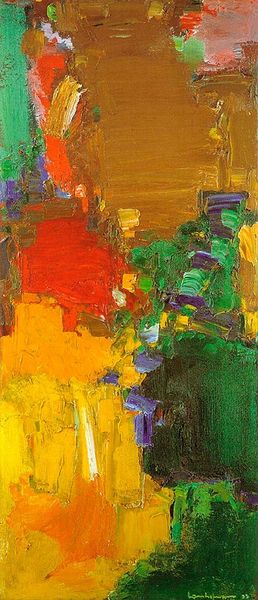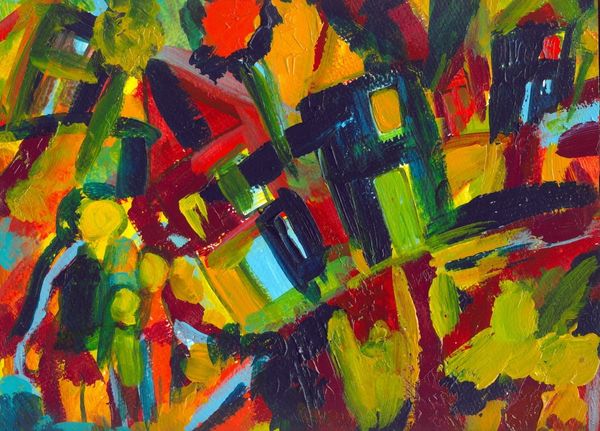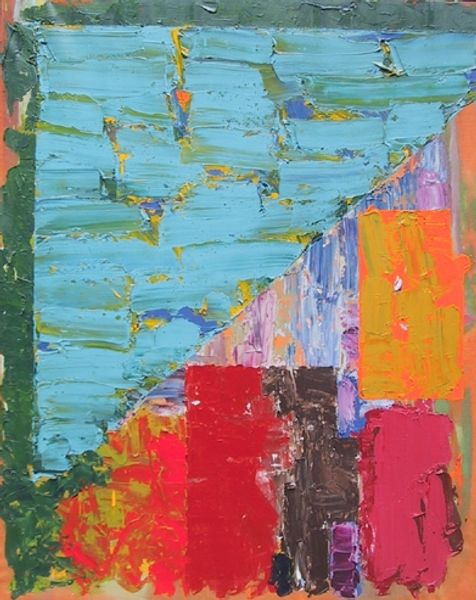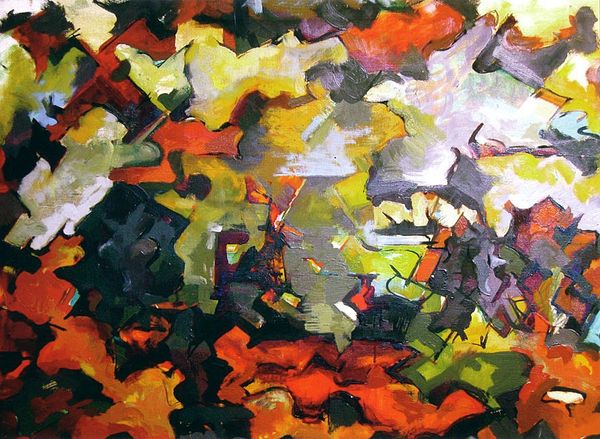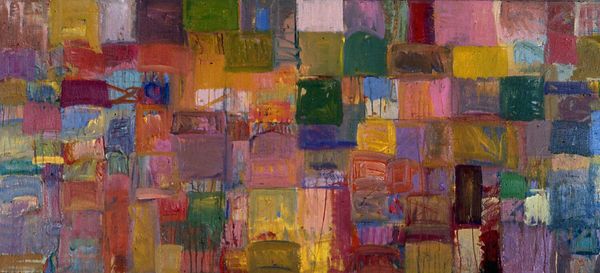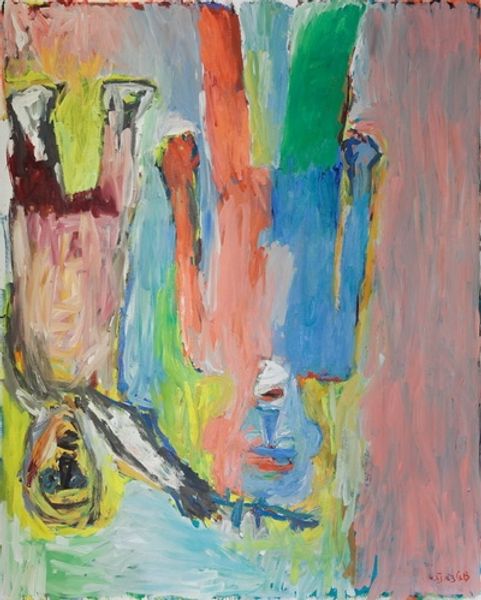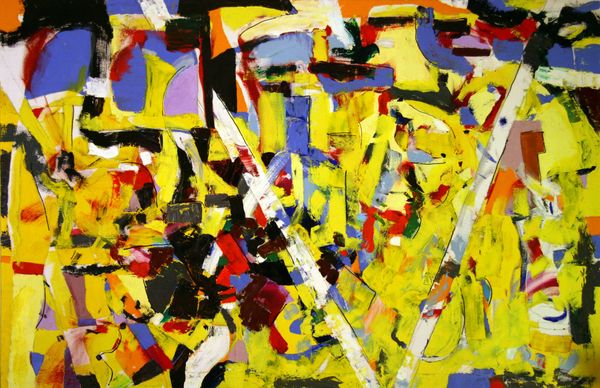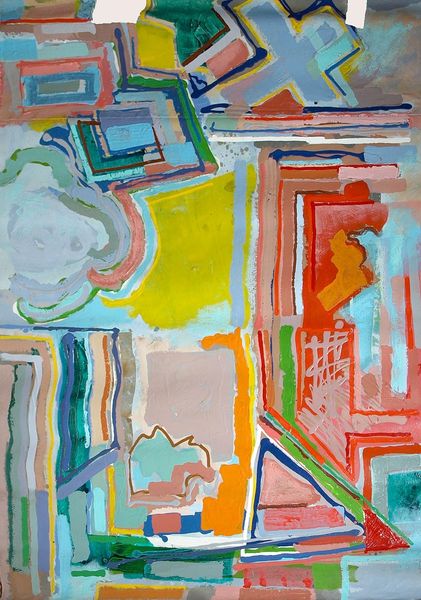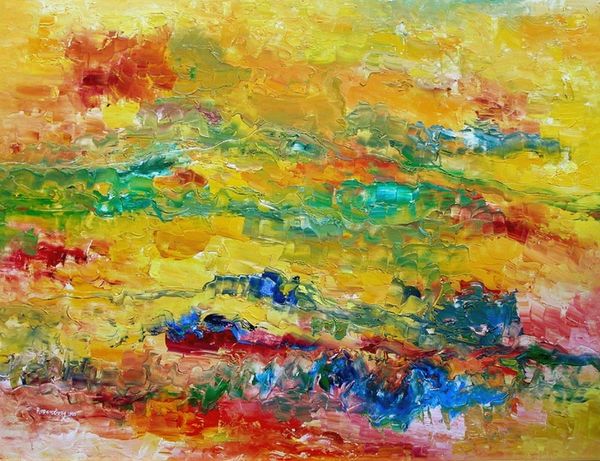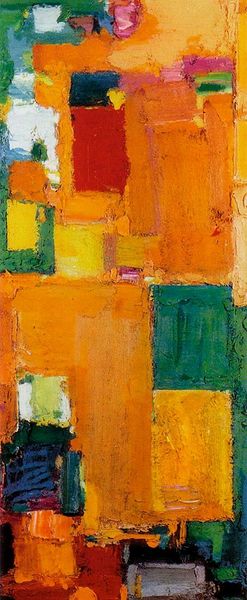
Copyright: Hans Hofmann,Fair Use
Curator: What strikes you first about this artwork, “August Light," painted by Hans Hofmann in 1957? Editor: The colours absolutely sing! There's an almost childlike exuberance, like building blocks scattered across the canvas. Curator: Indeed. The colours in "August Light" are bold, representative of the expressive, Fauvist influence on Hofmann’s practice. It is through such intense palettes and shapes that Hofmann created an intensely psychological representation. Editor: It also evokes the post-war optimism bubbling in American culture at that time, despite underlying tensions. It feels like a defiant celebration of pure experience. Does the placement of blocks offer any intentional meanings or did it purely represent the emotion he sought to communicate? Curator: That is a layered question. I believe he explored emotion while the canvas was laid on the floor in his studio, and this all over technique further liberated shape making from institutional norms. However, I would argue it can also recall archetypes related to growth as much as freedom of expression: Consider the upward thrust of the rectangular forms, evoking buildings or trees – symbols deeply ingrained in our cultural consciousness. Editor: So you are suggesting an undercurrent of collective memory subtly shapes the composition despite the seemingly free-form approach? Curator: Precisely. His manipulation of geometric structures creates a dialogue between control and chance, perhaps revealing how our shared symbolic language informs even our most spontaneous actions. His blocks reference more rigid approaches like cubism and fauvism to show a development. Editor: The bright hues of acrylic must have made the canvas particularly vibrant for its original viewers! It's a reminder of how colour itself carries its own historical baggage, signifying everything from religious iconography to commercial branding. Curator: Exactly. "August Light" invites us to consider not only individual expression but also the shared cultural vocabulary that subtly guides it. I'd encourage us to contemplate, what familiar stories do you think its abstraction invites from within yourselves? Editor: And I wonder, in what way has history and memory shaped how one interprets his "August Light"? Both resonate long after one walks away.
Comments
No comments
Be the first to comment and join the conversation on the ultimate creative platform.
